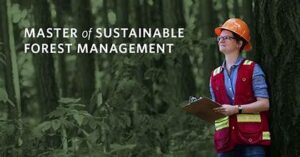Forestry regulations are pivotal in shaping how forests are managed and preserved. With increasing concerns about climate change, biodiversity loss, and sustainable development, recent regulations have sought to address these issues by promoting more sustainable forest management practices. This article delves into how these new regulations impact sustainable practices and forest management, focusing on their implications, benefits, and challenges.
Understanding Recent Forestry Regulations
Recent forestry regulations aim to balance ecological sustainability with economic development. These regulations are designed to ensure that forest management practices contribute to long-term forest health and biodiversity while meeting the needs of local communities and industries.
Key aspects of these regulations include:
- Sustainable Harvesting Limits: Regulations now mandate more stringent controls on logging to prevent overharvesting. This includes setting maximum limits on the amount of timber that can be harvested from a given area.
- Reforestation and Afforestation Requirements: New laws often require that areas cleared for logging be reforested or afforested, ensuring that forest ecosystems can recover and continue to provide ecological benefits.
- Protection of Biodiversity: Regulations include measures to protect critical habitats for wildlife and endangered species, which helps maintain ecological balance and supports biodiversity.
- Monitoring and Reporting: Increased emphasis on monitoring and reporting ensures compliance with regulations and provides transparency. This includes regular assessments of forest health and management practices.
Impacts on Sustainable Practices
1. Enhanced Ecosystem Health
Recent forestry regulations contribute to the overall health of forest ecosystems. By setting limits on logging and enforcing reforestation, these regulations help maintain the structural integrity of forests, which is crucial for supporting diverse plant and animal species. Healthy forests also play a significant role in carbon sequestration, which is vital for mitigating climate change.
2. Improved Forest Management
Sustainable forest management practices are now more prevalent due to regulatory changes. These practices include selective logging, which minimizes damage to the forest floor, and the use of advanced technologies for monitoring forest health. Improved management practices lead to more efficient use of forest resources and better forest conservation.
3. Economic Benefits
While some argue that stricter regulations might limit economic opportunities, they can also lead to new economic benefits. Sustainable forestry practices can create jobs in areas such as reforestation, forest management, and conservation. Additionally, sustainably managed forests often attract eco-tourism, which can provide a significant economic boost to local communities.
4. Community Engagement
Recent regulations emphasize the involvement of local communities in forest management. This participatory approach helps ensure that the needs and knowledge of indigenous and local populations are considered, leading to more effective and culturally appropriate forest management strategies.
Challenges and Considerations
1. Implementation and Compliance
One of the main challenges with new forestry regulations is ensuring their effective implementation and compliance. This requires substantial resources for monitoring, enforcement, and capacity building. In some regions, lack of resources or political will can hinder the successful application of these regulations.
2. Balancing Economic and Environmental Goals
Striking a balance between economic development and environmental conservation remains a challenge. While regulations promote sustainable practices, they must also accommodate the economic needs of communities dependent on forestry. Finding this balance requires careful planning and collaboration between stakeholders.
3. Adapting to Climate Change
Forestry regulations must also adapt to the changing climate. Climate change affects forest ecosystems in complex ways, such as altering species distributions and increasing the frequency of pests and diseases. Regulations need to be flexible and adaptive to address these evolving challenges effectively.
4. Ensuring Equity
Equity is a crucial consideration in forest management. Regulations must ensure that the benefits of sustainable practices are distributed fairly among different stakeholders, including marginalized communities. Addressing issues of equity helps build support for regulations and promotes social justice.
Conclusion
Recent forestry regulations have significantly impacted sustainable practices and forest management by promoting ecological health, improving management practices, and balancing economic and environmental goals. While challenges remain, the emphasis on sustainable practices and community engagement represents a positive shift towards more responsible forest management. As these regulations continue to evolve, they offer a promising framework for addressing the complex issues facing global forests and contributing to a more sustainable future.



